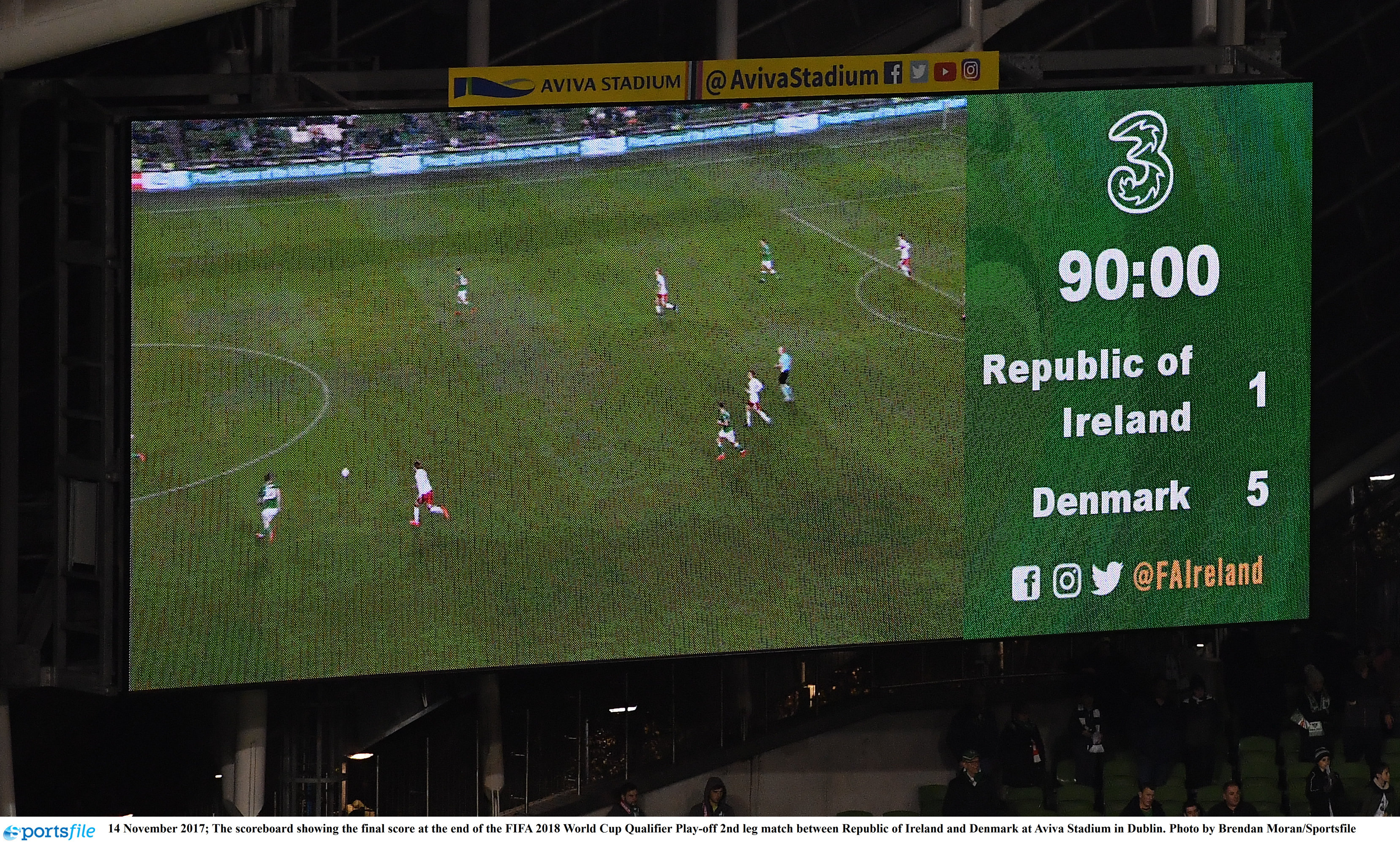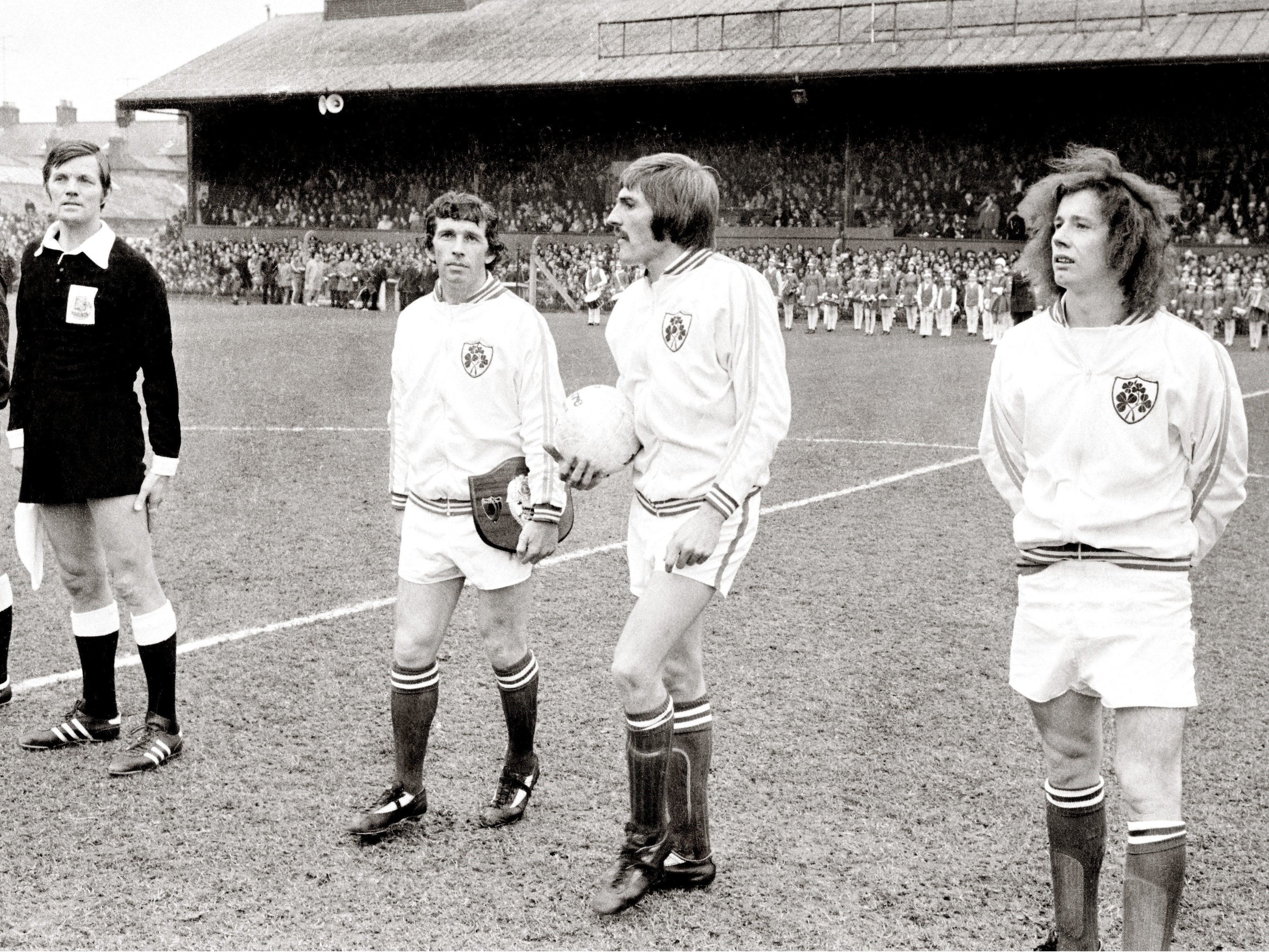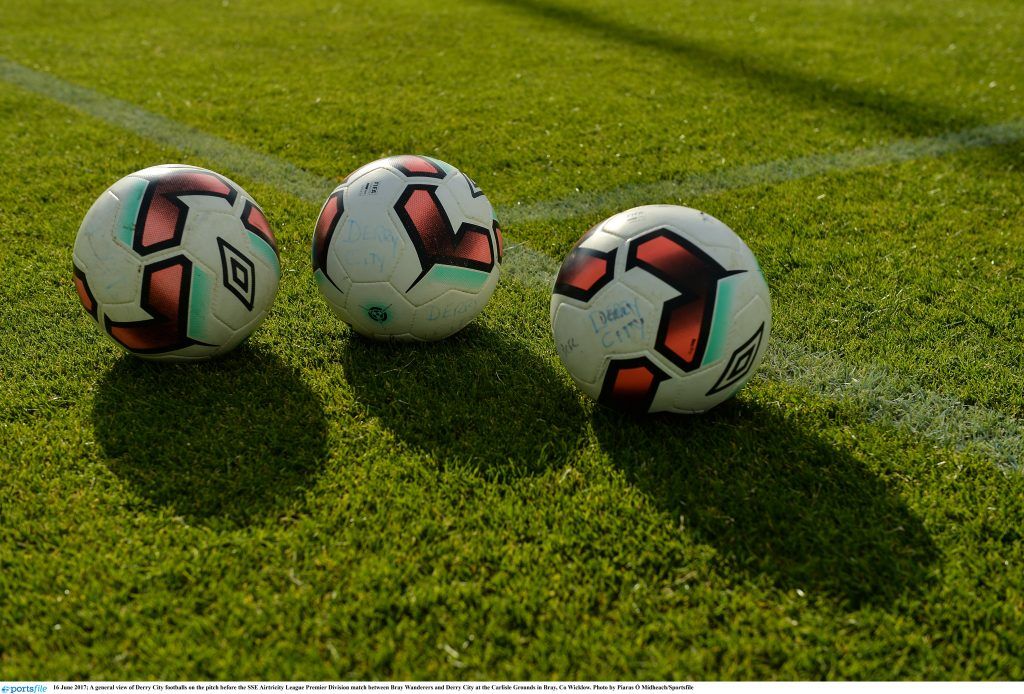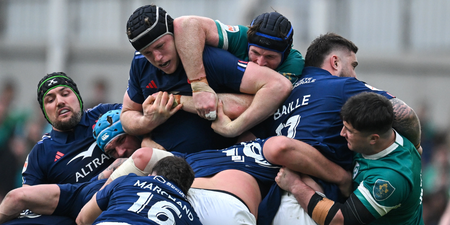The Republic of Ireland’s 5-1 defeat to Denmark brutally exposed so many issues within Irish football.
From the micro – Martin O’Neill’s apparent absence of tactical preparation and strange selection choices. To the macro – the lack of young players coming through and the dearth of players featuring at the top level of the sport. The problems facing Irish football are simply too numerous and complex to list in one article, but one issue is inescapable, and it’s the League of Ireland.
If Ireland is to ever produce a national team that can regularly qualify for major tournaments, if players are ever to aspire to anything more than hoofing the ball away and if fans want more days out in foreign countries to become viral sensations, then the League of Ireland must develop into a viable entity for professional footballers.
It doesn’t matter where you stand on the strange spectrum of Irish football supporters – whether you’re a diehard supporter of a League of Ireland club, or the biggest ‘barstooler’ who would rather watch Burnley v Crystal Palace on TV than cross the threshold of your local League of Ireland stadium – all should agree on the importance of a stronger domestic league. Nothing will change until that occurs.
Flawed model
The dominant model of Irish football development for the past 60 years has been exporting players in their mid-teens to English clubs. This worked quite well for decades, as Irish players have populated almost every English team in the Football League at some stage. From the end of the second world war to 1970, English clubs signed 123 Irish players, and only more Scottish players joined these teams during this period. Brilliant footballers such as John Giles, Liam Whelan, David O’Leary and Liam Brady made the journey across the water at a young age and became some of the best in Europe.
Between 1946 and 1955, 46 of the 85 Irish players who left for England joined teams in the English top flight. This indicates that the quality of Irish players who left was high, but also shows that the size of the talent pool available to English clubs was small in comparison to later decades. As this talent pool widened and eventually became globalised, and the League of Ireland declined, fewer and fewer Irish players were transferred to English clubs. They joined as apprentices in their mid-teens instead, as this was a cheaper, lower-risk move for the English club.
By the mid-1980s, there were more Irish apprentices joining English clubs than there were transfers involving Irish players. The mid-1980s was also the point when English clubs first made more overseas signings than signings from Scotland, Wales, Northern Ireland or Ireland. And 1985 was the last time a League of Ireland player represented the Republic of Ireland in a competitive fixture.
Irish football development essentially becoming subsumed with that of its more powerful neighbour during this period. This coincided with the talent pool becoming globalised, and thus the final step to the first team became more and more difficult to make for Irish players in England. Between 1996 and 2005, 148 Irish footballers migrated to England, but just 40 made an appearance in the Premier League. Between 2006 and 2010, just eight of the 52 Irish footballers that signed for English clubs as teenagers made a first-team appearance in the top-flight. In 2011, it was estimated that 85 percent of Irish 16-year-olds would not be at the same English club within three years, while 94 percent of Irish players in England who sign a professional contract at 16 do not get another contract at the same club. Of the footballers who return to Ireland, 75 percent do not return to play in the League of Ireland.
With such a low success rate, the focus on exporting young players cannot be considered successful, yet it continues to be the primary aim of Irish youth football, despite warning signs stretching back decades. In short, Irish football is failing the overwhelming majority of these players and we’re letting talent slip through the cracks, something a small country just cannot let happen. Premier League clubs spent £1.3b in the summer transfer window, and Jon Walters (for £3m), was the only Irish player bought by a top-flight team. And he grew-up in England, so didn’t come through the Irish system. The uncomfortable truth is that English clubs don’t really want or need Irish players anymore. It therefore makes no sense to continue placing such an emphasis on exporting raw talent to a market that will soon discard it.
New approach & improved standards
This brings us back to the importance of developing a fully viable professional domestic division. In base terms, the situation facing Irish football is to either improve the players being exported or to develop a viable outlet for talent to thrive at home. But why can’t it be both? Why can’t Irish football aim to produce better players and also to create an outlet for them to thrive in Ireland and to funnel talent towards the League of Ireland? For too long, the various elements of Irish football have pursued their own agendas, ignoring the bigger picture and a common goal.
It’s time to create a clear path from schoolboy football to the highest form of domestic football in the country. The best players will still join clubs in England and other richer leagues, but they will do so as more mature, developed players. They will leave because of globalisation, as they do in every other small and medium size country in the world, rather than being sent away as relatively underdeveloped youngsters as part of a flawed production model.
Of course, young players shouldn’t be prevented from leaving for English clubs if they, their parents and their clubs feel they are ready. But it should no longer be the dominant model of development, because it’s clearly no longer working, as the figures prove. Former Arsenal and Ireland player Graham Barrett wrote a brilliant but sobering article in 2016 on the issues facing Irish football. It’s essential reading for anyone with even a passing interest in the fortunes of Irish football. According to Barrett:
“The failings with our development methods mean that in my opinion, at this point in time, it is conceivable to think that at least 75 per cent of the players leaving these shores are either not good enough or ready to compete at English clubs.”
The average teenage footballer in England is technically, tactically and physically more developed than his Irish counterpart. There is a drastic need to improve in almost every facet, from facilities, to coaching to even the most basic requirement – actual time spent with the ball.
My nephew’s U12 team went on a trip to Spain last month, they saw the Valencia first-team train and then watched them beat Sevilla 4-0 at the Mestalla. The next day, his team beat a Valencia academy team in a match. A team from west Dublin beat a side representing one of Spain’s biggest clubs, yet people will tell you there aren’t enough good young footballers in Ireland. There are plenty of good young footballers, but they’re being failed as Irish football hasn’t kept pace with changes elsewhere and has continued to use methods that worked 30 years ago while persisting with an archaic structure that is detrimental to the sport in Ireland.
In most European countries, young footballers aged between eight and 12 train between eight and 12 hours a week. Players between 12 and 16 train at great facilities, with qualified coaches, for 12 to 15 hours a week. My nephew trains for two hours a week and plays a match at the weekend. In four years’ time, a player in the Valencia team he beat will have trained for roughly 2,000 more hours than him. Is it any wonder Spanish players are better with the ball?
Opportunity
If young Irish players are no longer receiving first-team opportunities at English clubs, then it can be viewed as an opportunity rather than a disaster. It’s a chance to take control of the country’s football development, rather than exporting it. Players have been developed for export for decades, and a by-product of this has been clubs and coaches generally prioritising the fastest, strongest, tallest players over potentially creative, technical footballers. Players with such physical attributes are considered less risky than someone who might need more time to develop, or someone who could potentially lose the ball trying to create something.
Wes Hoolahan didn’t leave Irish football until he was 23, while infinitely less talented players left when they were in their teens. The rush for players to ‘get away’ to England has harmed Irish football and at this point it no longer makes any sense to persist with it as the primary goal, as English clubs are discarding Irish talent.
If Irish football can’t mend the fractures in the structure and create a clear pathway between schoolboy and senior football, with more coaches and more time on the ball for young players, now, then what exactly will it take for the various parties to act?
It’s time to rip it up and start again, because what has been practised evidently isn’t working. The former League of Ireland players in O’Neill’s squad for the World Cup play-off have amassed 264 caps between them, and it would have been over 300 caps had Seamus Coleman been able to take part. In recent years, Irish domestic football has become the de-facto route for many internationals, the springboard to relaunch a career if a player has returned home from England, or a stage to prove yourself if you were overlooked by scouts in your teens. The step to English football has become too great for most Irish schoolboy footballers to make, but the League of Ireland is being used as a bridge to professional football across the water.
Irish football development needs to refocus and the highest level of domestic football needs to be included in the equation. It’s no longer enough to depend on English clubs to develop Irish players and to give them first-team opportunities. The days of that being a viable model are long gone. It’s also time to ditch the old, tired and lazy excuses. If Gaelic football, hurling and rugby didn’t exist, and every participant in each sport focused fully on playing football, the same problems would still exist. Some naturally talented players would break through, but there still wouldn’t be enough qualified coaches to teach them. They would still have limited time on the ball in training and there would still be no full-time professional league for the players to advance towards. Those deemed to be the best would move to England in their mid-teens, most would be home, or drop down the divisions, by the time they’re 20.
If other sports are taking footballers, then it’s nothing compared to the footballers we’re letting fall out of the sport through poor development and an archaic, fractured structure. The Dublin District Schoolboy League, which is just one schoolboy league in the city, is the largest of its kind in Europe, with over 200 clubs and 16,000 players competing. There are plenty of talented, dedicated and ambitious footballers and coaches in there.
However, as the defeat to Denmark conveyed, talent and effort only count for so much. The Irish players were let down by archaic tactics and limitations were exposed by a poor structure that had been persisted with because it garnered results in the past. This applies to Irish football as a whole, and a new approach is badly needed.



















































